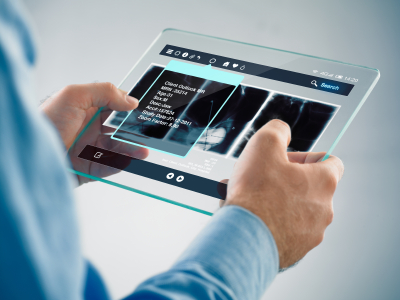After decades as an innovative slow poke, prescription has entered its information age. Versatile advances, sensors, genome sequencing, and advances in investigative programming now make it conceivable to catch unfathomable measures of data about our individual cosmetics and nature’s domain around us. The whole of this data could change drug, transforming a field went for treating the normal patient into one that is altered to every individual while moving more control and obligation from specialists to patients.
The inquiry is: can enormous information greatly improve the situation?
“There is a ton of information being accumulated. That is insufficient,” says Ed Martin, between time chief of the Information Services Unit at the University of California San Francisco School of Medicine. “It’s truly about concocting applications that make information significant.”
The business opportunity in understanding that information possibly $300 billion to $450 billion a year, as indicated by specialists Mckinsey & Company—is driving settled organizations like Apple, Qualcomm, and IBM to put resources into advances from information catching cell phone applications to billion-dollar expository frameworks. It’s encouraging the climbing eagerness for new companies too. Investment firms like Greylock Partners and Kleiner Perkins Caufield & Byers, and also the corporate wander trusts of Google, Samsung, Merck, and others, have put more than $3 billion in medicinal services data innovation since the start of 2013—a quick quickening from past years, as per information from Mercom Capital Group.
This MIT Technology Review Business Report takes a gander at the innovations and organizations destined to survive the blast and the difficulties they will confront as they push to revamp social insurance.
The gatherings that control the most therapeutic information today are insurance agencies and forethought suppliers, and their information examination is now starting to change medicinal services. Express Scripts, which oversees drug store profits for 90 million parts in the U.s. furthermore forms 1.4 billion remedies a year, has scoured its information from specialists’ business locales, drug stores, and labs to discover designs that may caution specialists to potential unfavorable medication cooperations and other medicine issues. Specialists can now know 12 months ahead of time, with an exactness rate of 98 percent, which of their patients may neglect to take their medication. Making moves to turn away that issue could enhance patients’ wellbeing and decrease the $317 billion used in the United States every year on unnecessary ER visits and other treatment.

Today numerous organizations and medicinal services suppliers are adding different layers of data to make an undeniably exact, tolerant particular brand of prescription. New portable advances, for instance, could give data around a persistent’s commonplace practices and wellbeing, making open doors for consideration suppliers to impact patients much all the more oftentimes. Information got from electronic wellbeing records would include specialists’ bits of knowledge, test outcomes, and therapeutic history. Hereditary information would offer knowledge into whether patients are inclined to specific conditions or how they may respond to medicines.
“We need to accept that the greater part of the things we do in solution are focused around confirmation,” says Malay Gandhi, overseeing executive of Rock Health, which finances medicinal services new companies. “Some are, however most aren’t.” The open door, he says, is that drug could get to be more logical and confirmation based.
Information is likewise changing the part of patients, offering them an opportunity to have more focal impact in their own particular forethought. One path is by utilizing versatile engineering to screen slumber designs, heart rate, movement levels, etc. Being developed are significantly more progressive gadgets fit for constantly checking such key measurements as blood oxygen, glucose levels, and even push. What’s more organizations like Apple are planning to wind up storehouses for this data, giving buyers better approaches to track and maybe enhance their wellbeing.
This sort of data may be helpful and intriguing for anybody, yet it can get to be vital for the millions living with endless conditions like diabetes, coronary illness, and dejection. Welldoc makes a solution just FDA-endorsed “patient instructing” framework, which exhorts clients on the amount insulin they ought to take in light of data recorded on their cell phones: glucose levels, late suppers, and activity. It likewise offers custom-made messages of consolation and furnishes the tolerant’s specialist with treatment suggestions focused around the information and built medicinal rules. A gimmick a work in progress would empower the framework to anticipate a hypoglycemic response and help clients dodge it.
Ginger.io utilizes information gathered (with authorization) from a telephone and different sensors to evaluate the conduct of individuals with maladjustments, for example, sadness. Is it accurate to say that they are calling friends and family, or getting enough rest? At the point when a patient is hinting at battling, somebody could be cautioned.
About whether, both organizations will total this data to help specialists contemplate and enhance treatment generally speaking. “It’s similar to one of the biggest clinical trials ever,” says Chris Bergstrom, Welldoc’s boss method and business officer. “Furthermore its not even in a nature’s turf it progressively.”
Families influenced by Phelan-Mcdermid disorder, an uncommon condition in which an erasure on chromosome 22 reasons issues, for example, learning and memory shortages, are building a database of data from genomic tests, clinical medicinal records, far reaching family studies and histories, and that’s only the tip of the iceberg. The objective is to make a focal vault where specialists can look at numerous wellsprings of information all the while. That is progressively critical as analysts start to see associations between Phelan-Mcdermid, a mental imbalance, and different conditions. An alternate profit: information that once would have been secured up one scholarly specialist’s lab will now be readily available to many different experts.
“So much of that data is already out there,” says Megan O’Boyle, whose daughter Shannon was diagnosed in 2001, just two years after chromosome 22 was sequenced. “It’s just sitting there waiting to be used.”
